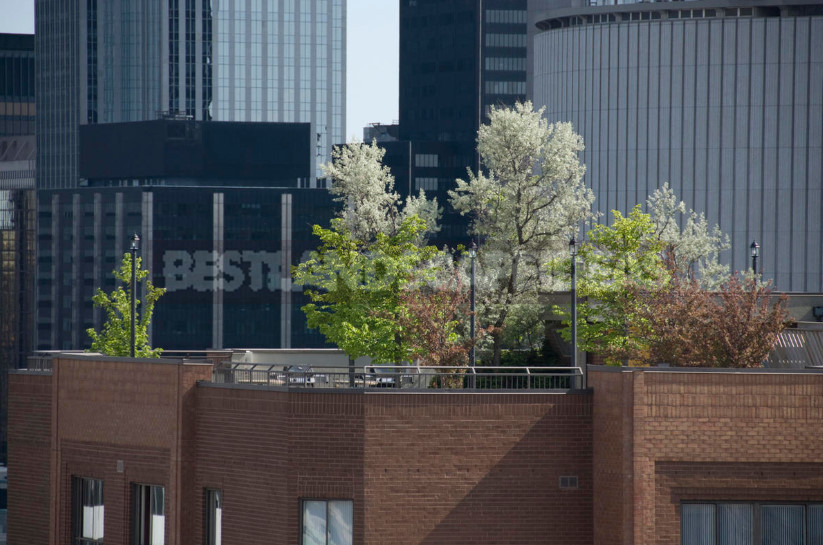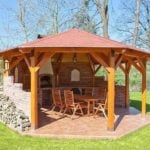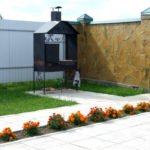Who and when first came up with decorating the roof with plants, do not know now: for centuries, floating gardens that were in fashion, then sunk into oblivion. One thing is for sure: having seen at least once this amazing creation of human hands, it is impossible to remain indifferent. Now the roof gardens are experiencing another wave of popularity. They are most relevant in megacities, whose residents are simply suffocating surrounded by concrete and glass, so they try to green the space around in all possible ways. In big cities, roof gardens are not just a whim: they are an additional place to relax and a corner of nature that pleases the eye and relieves stress.
By the way, these gardens not only decorate our cities, but also have a beneficial effect on the environment, increase the sound and thermal insulation of buildings and even extend the service life of the roof. Of course, provided that they are properly organized.
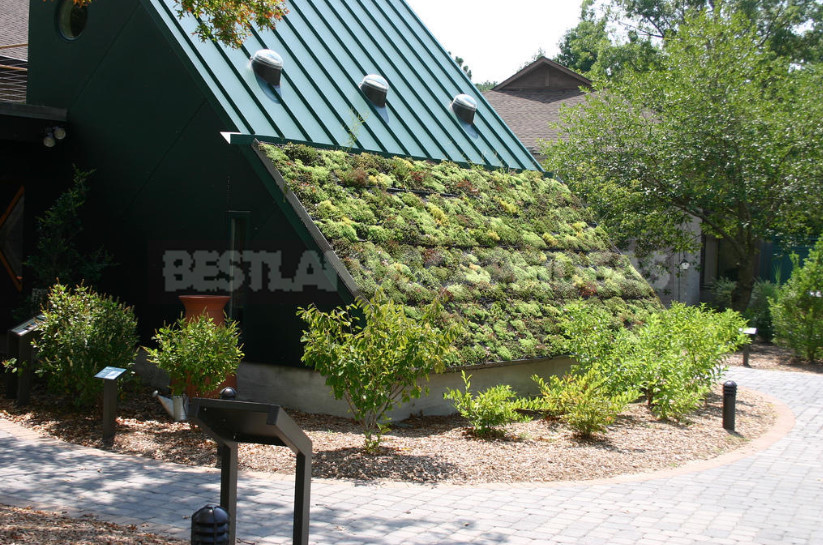
How to make a roof garden? First, you need to clearly define what you want to get in the end:
- just a green area, an additional place to place your favorite plants, on which you can walk only visually;
- or you need a full-fledged corner of nature (albeit in miniature) with paths, a pond, benches and other garden attributes.
Depending on the answer, choose the type of garden: extensive or intensive.
Extensive gardens
Easier to set up and operate. They can be located on a flat or pitched roof.
On the flat roof of a garage, gazebo, shed, you can easily arrange a tub garden: in spring, plants in containers are installed on the roof, and in autumn they are removed. In this case, no additional preparatory work is required. Of course, the roof must be strong enough to withstand the weight of plants (and there may be a lot of them). Just in case, it is better to fix the containers to the roof with screws, otherwise the wind can knock them down, grab them and throw them off the roof (it’s good if it’s just on the ground, and not on someone’s head). Such gardens do not include paths and other garden structures.
On a pitched roof, lay out gardens using loose soil. The pitched roof gardens serve as a green area and are not intended for people to visit. The plants used are the most unpretentious.
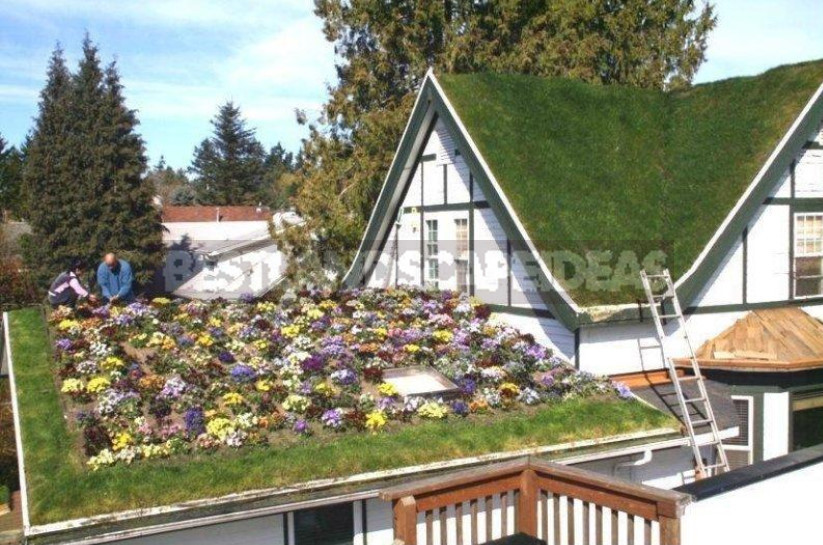
The requirements for the strength of the roof are increasing, because it will have to withstand loads of up to 200 kg (441 lb) per m2, and in winter, taking into account snow, these indicators will be even higher. Therefore, if there is even the slightest doubt about the strength of the roofing system, it will have to be strengthened. An important caveat: the slope of the roof should not exceed 30 °, otherwise the soil may slip.
The arrangement of the garden itself is quite simple:
- due to the slope, no drainage layer is needed during creation – the water will drain well anyway;
- it is enough to apply a layer of waterproofing material;
- they placed the box and covered it with earth in the cells;
- a restrictive edge is installed on the edge of the roof.
Intensive garden
Such a structure is more durable, equipped with all the attributes of garden paths, recreation areas, gazebos, rock gardens, ponds or fountains. Plants are planted in the ground, the layer of which can reach 200 cm (6.6 ft) and therefore the load will be impressive. The arrangement of such gardens will require the involvement of a number of specialists who will be able to correctly calculate the load on the supporting structure of the building and the foundation, competently equip waterproofing, drainage. During operation, constant monitoring of the condition of these systems will also be required. It will be difficult for an ordinary amateur gardener to cope with this.
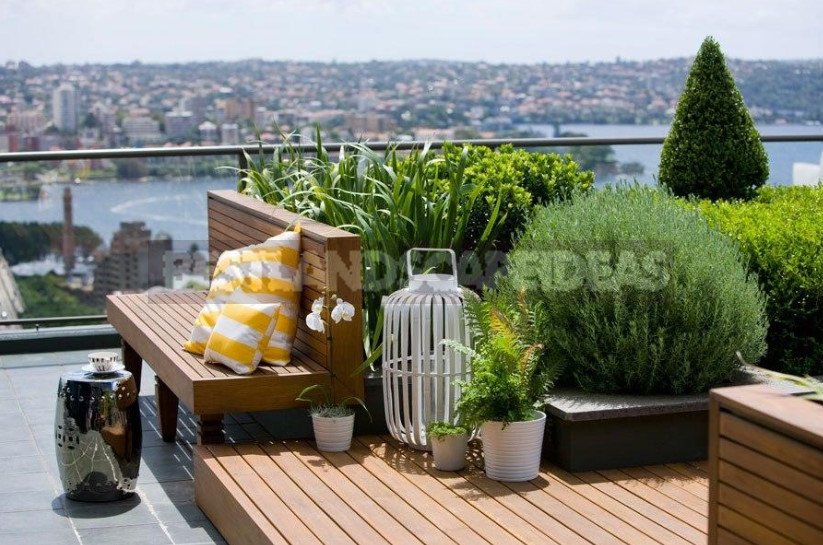
Most often intensive gardens are placed on the flat roofs of shops, hotels, multi-storey residential buildings. When creating them, it is better to abandon the use of heavy materials: for paving paths, use light wood or plastic, replace ordinary soil with light. All this will reduce the load on the building. Since the intensive garden is intended for people to visit, you need to take care of security: make a reliable fence at least 1 m (3.3 ft), provide a convenient entrance, provide lighting if you are planning a night walk in the roof garden.
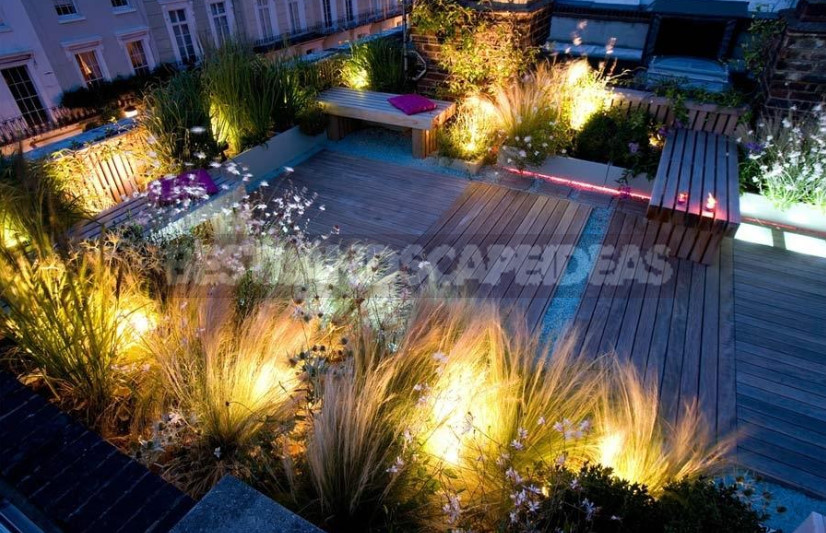
Vegetation for these gardens can be chosen from a variety of herbs and flowers to coniferous and deciduous trees. Naturally, not all plants will be comfortable in such unusual conditions, so do not rush to pull everything on the roof. More detailed information about the criteria for selecting plants for roof gardens will be discussed in the next article.
Now, knowing the basics of arranging a high-rise garden, you can really appreciate the possibility of creating it on the roof of your house.
